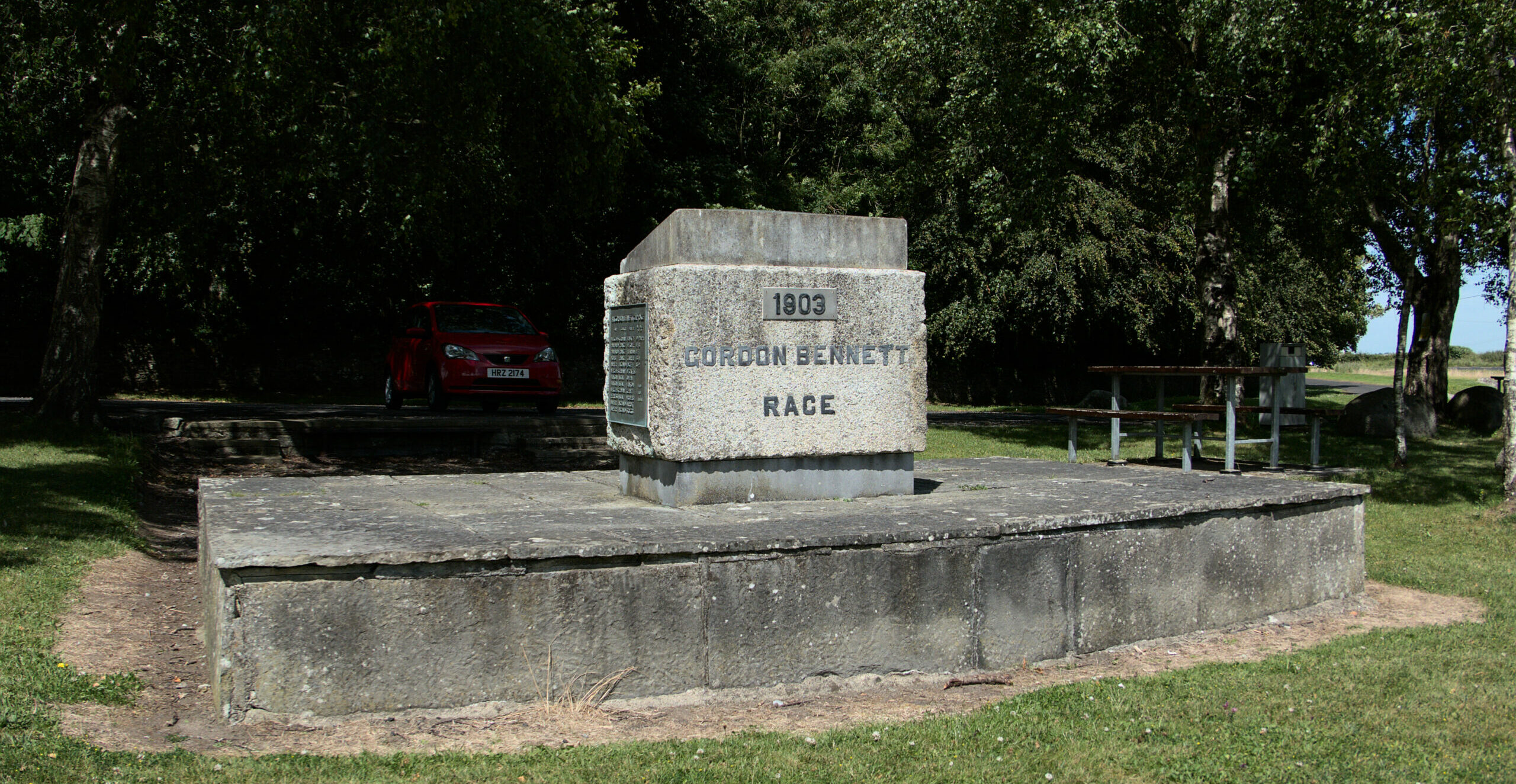
It’s not so much raining as there’s more humidity than the sky can bear. It pattered down most of the night. Now it hangs in the air – spritzes as you walk. I quietly leave the rooms, grab a cap from the car, and walk to the town square. Past the Gordon Bennett memorial plaque, and the tourist route sign.
Flicks, nods of the head by way of ‘good morning’ to those awaiting the Dublin bus – to the newsagent. I find myself checking the date on the ‘paper – a sure sign that The Road has worked its magic.
Saunter back to the hotel. A seat in last night’s bar, turned breakfast room.
The coffee was good, the breakfast better, the welcome best. And so, I’m behind my self-imposed schedule. I’m expected at The Shackleton Museum, Athy in an hour. It’s half a lap of the northern loop away, and I had planned to make stops.
I drop the room key.
“Take care now. The roads will be slippery after that rain.”
True.
I expect they said the same to Elliott Zborowski one-hundred & twenty years ago, as he scouted & compiled this route. A world-changing motor racing circuit that Zborowski wouldn’t live to see used. The dust & twists at La Turbie did for him.
So I edge the car onto the street and pass through Kildare control, as if proceeded by bicycle.
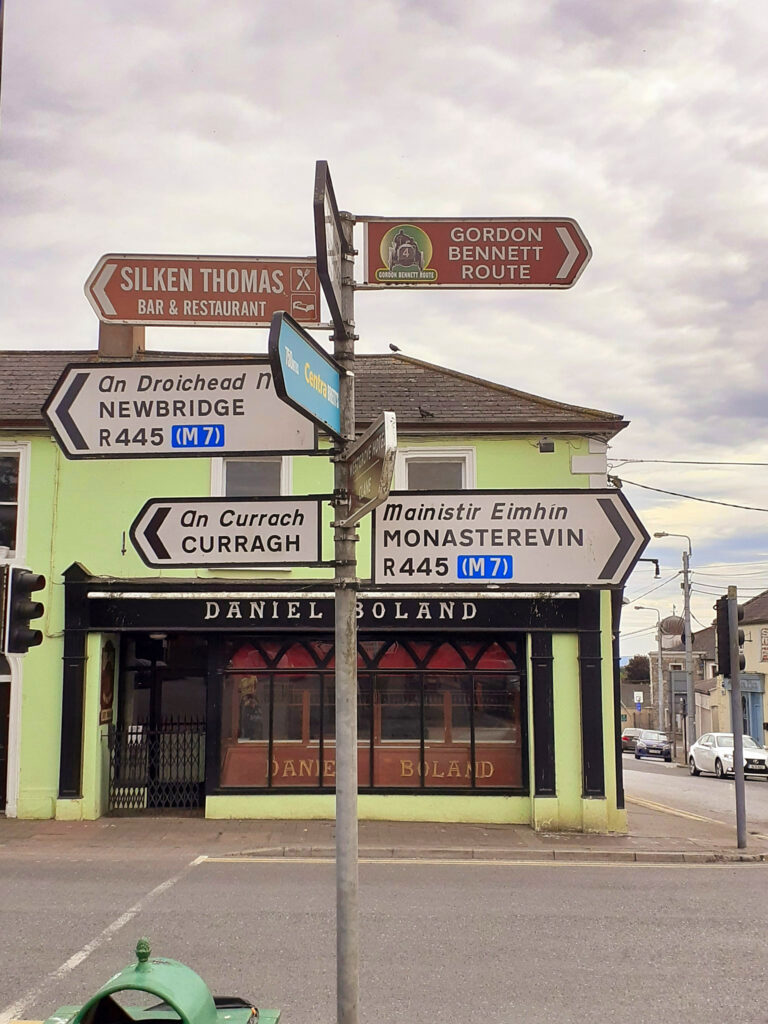
Day two is brightening; and with it the perspective seems to lengthen, the sky opens. Out towards Monasterevin, and another straight that charges towards the horizon… and they say the Romans only ‘visited’.
The over-riding impression is how bloody fast these roads are. Were… could be. And with trees chopped and hedgerows pulled for the 1903 race it must have felt rather familiar to the men who had, until then, raced city-to-city across swathes of Europe.
A chance to cut cross-country, to make time to Athy. But I’ll persist with the race route.
The organisation of the 1903 race was exceptional. One of the innovations was the use of motorcycle despatch riders, who could traverse the circuit via the minor roads. They proved to be so efficient that the following month the War Office asked for volunteer riders to take part in military manoeuvres. By The Great War they were essential.
Approaching Portlaoise, and it appears that the signed tourist route runs through the town. I’m following the race, so at this westerly point I dive for R425, and cut through onto the N80.
The sun has burned-through now and the day is set fair, as countryside opens on either side of the road. Scanning the farmland, with its straw stacked as high as an elephant’s eye, searching for a landmark.
There! The Rock of Dunamase… so we must be approaching the fast downhill sweepers where Charles Jarrott’s Napier had steering failure in the race.
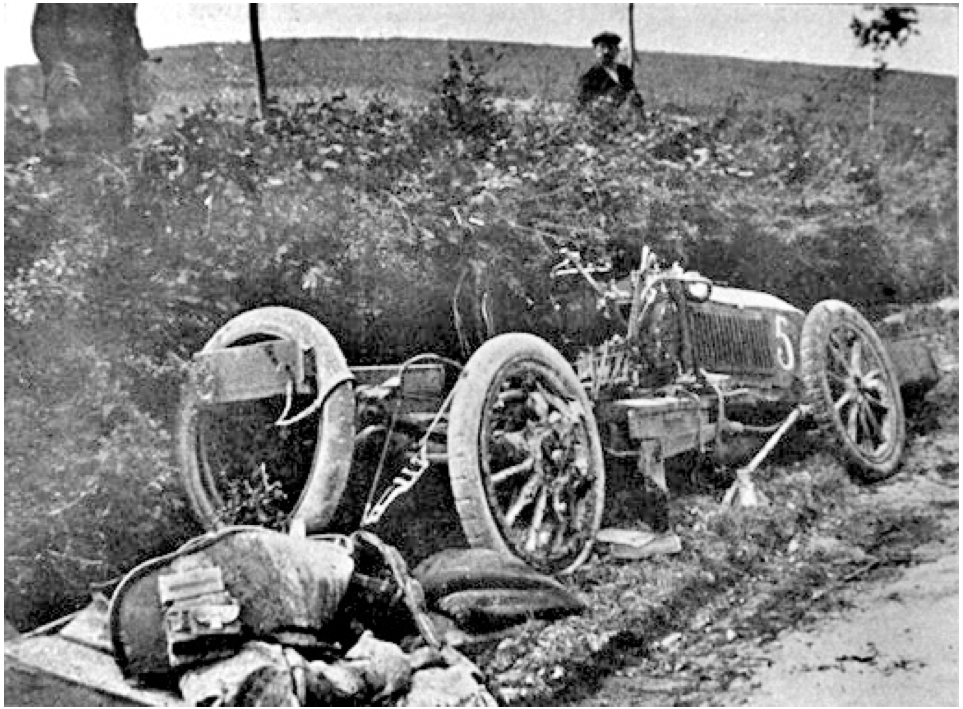
The Napier had the mother & father of all accidents, barrel-rolling down the road, destroying itself. Jarrott thrown clear, his mechanic Cecil Bianchi trapped under the wreck, getting burnt by the exhaust.
Pre-race the two men had tried lifting a corner of their car to see if it was an option when changing tyres – they found the machine quite immovable. Now, as the crowd recoiled at the horror, Jarrott staggered to his feet, lifted the Napier, and Bianchi was pulled free. Both men collapsed, so deeply unconscious that the locals covered them and carried them away. Word of their death spread quickly around the circuit.
Jarrott came-to flat on his back in a farmyard, covered with a sheet. Next to him, Bianchi was also rousing.
Racing towards the bends, Caters spots Jarrott shuffling towards the roadside and slides the Mercédès to a halt. He checks on the two men, then charges on. Stopping at the Ballyshannon grandstand Caters informed the officials, and Jarrott’s sister, that all was well.
Baron de Caters’ race was scuppered, but his kindness & consideration is still a talking point one-hundred & twenty years later. Shades of George Russell, if you ask me.
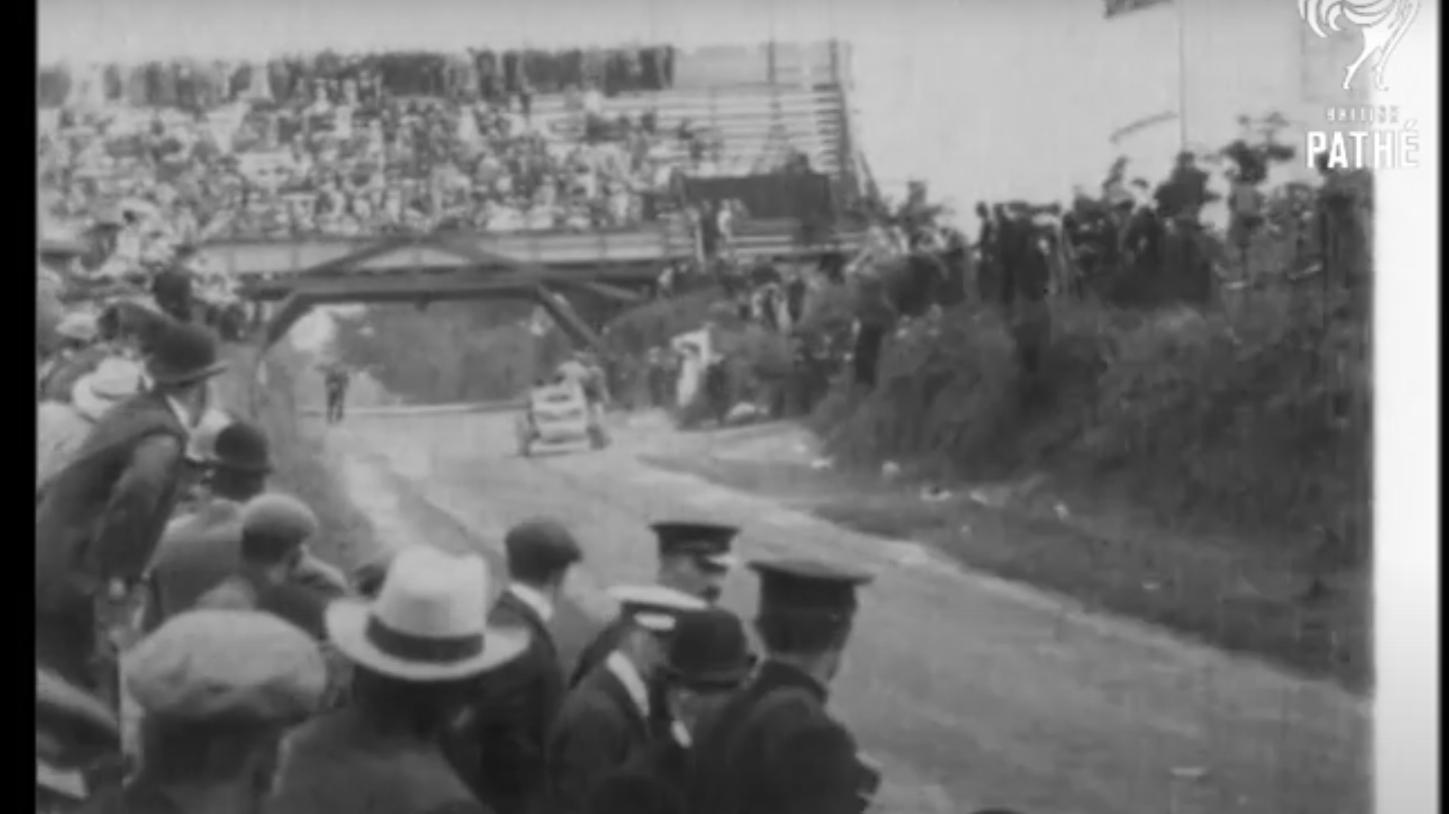
I plan to stop. To try and find where the famous photos were taken. But I’m sticking to the prescribed 100 km/h, and the folks behind obviously have to get on with their day. Then, a flat-left and the road subtly narrows… warnings come thick & fast.
No overtaking! Caution, S bends! Caution, road narrows! Caution, road on the left! Caution, slippery surface!
Solid lines and too many arrows feed me into the first righthand bend, as the road pinches and the signage returns.
Caution, road narrows! Caution, steep descent! Caution, 1 in 10! Caution, road on the left!
…into a very long, easy left over crest, don’t cut.
SLOW, written on the road as it straightens. Still descending.
DANGEROUS JUNCTION AHEAD, across the road in letters as tall as the car is long.
The road – surely as narrow as 1903, with high verges – levels out and, through a final S-bend, stretches once more towards the horizon.
Wow!
I don’t stop, I don’t turn around.
How much time must have been lost and found through those bends? Sliding a racing Mercédès through there, 60hp boosted by gravity, seems implausible. How must it have felt for the locals to see the great Napier tumbling, out of control?
Hold the thought. Time to slow for the village of Stradbally.
For the 1903 race the French squad equipped a ship – the S.S. Ferdinand de Lesseps – as a workshop, and filled it with spares, supporters and their cars. Despite having this home-from-home in Dublin docks, team members spent a lot of time around the circuit in the run-up to the race. Legend has it that one of the Frenchmen scratched ‘PARIS’ in large letters into a stone wall in Stradbally.
As I arrive in the village there is a problem. Faced with a dozen or more ancient stone walls, I can easily imagine a homesick Parisian mécanicien kicking his heels at any of them. So, again, I keep rolling.
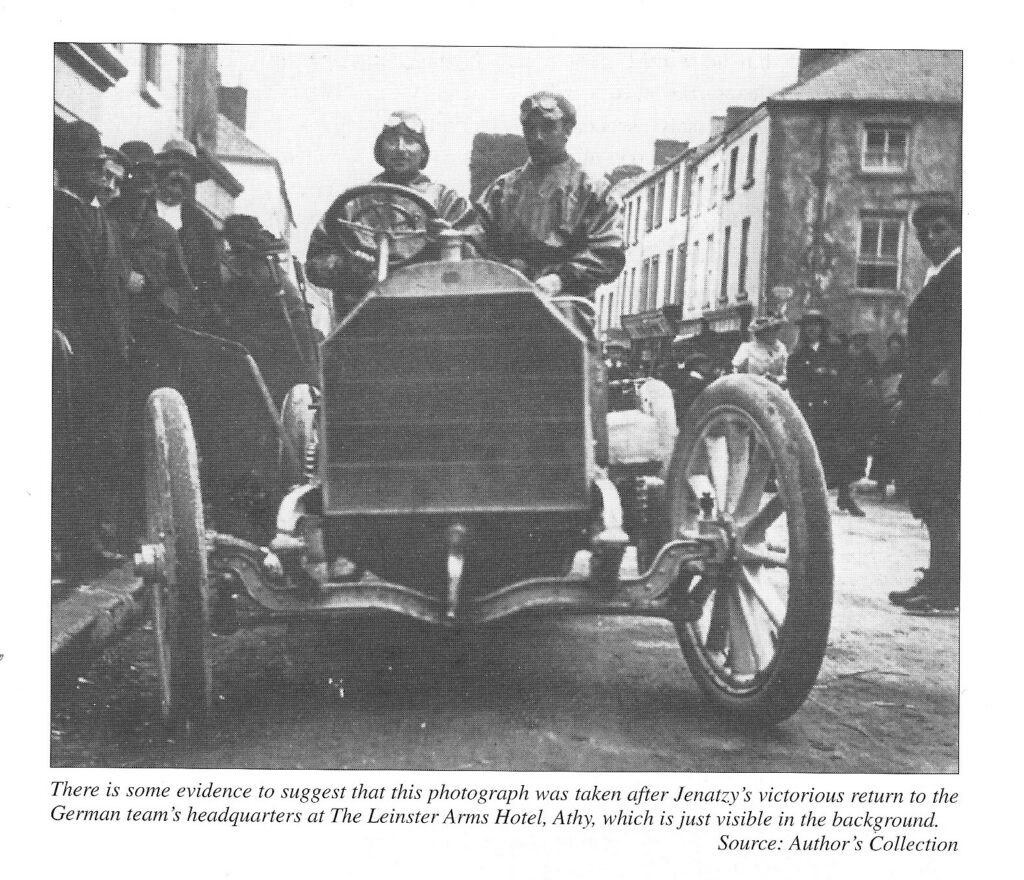
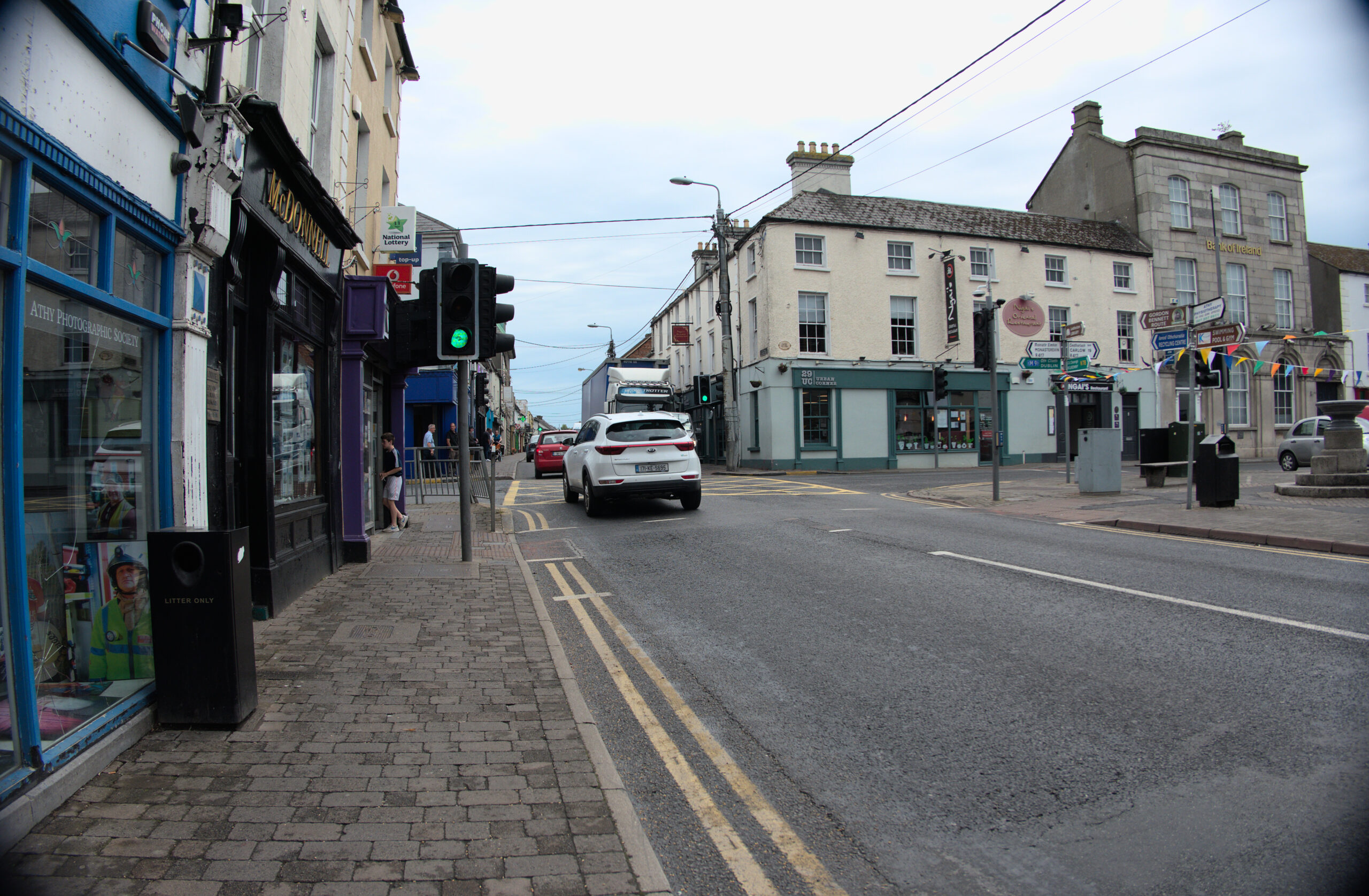
Athy – the historic and important market town, that often gives its name to this circuit – is buzzing this morning. Resisting the temptation to abandon my car in the square, Jenatzy-like, I find a parking spot and make my way sharpish to the museum. I can’t resist a moment or two on the old bridge though, and smile at the thought of those laughing Mercédès mechanics of yesteryear.
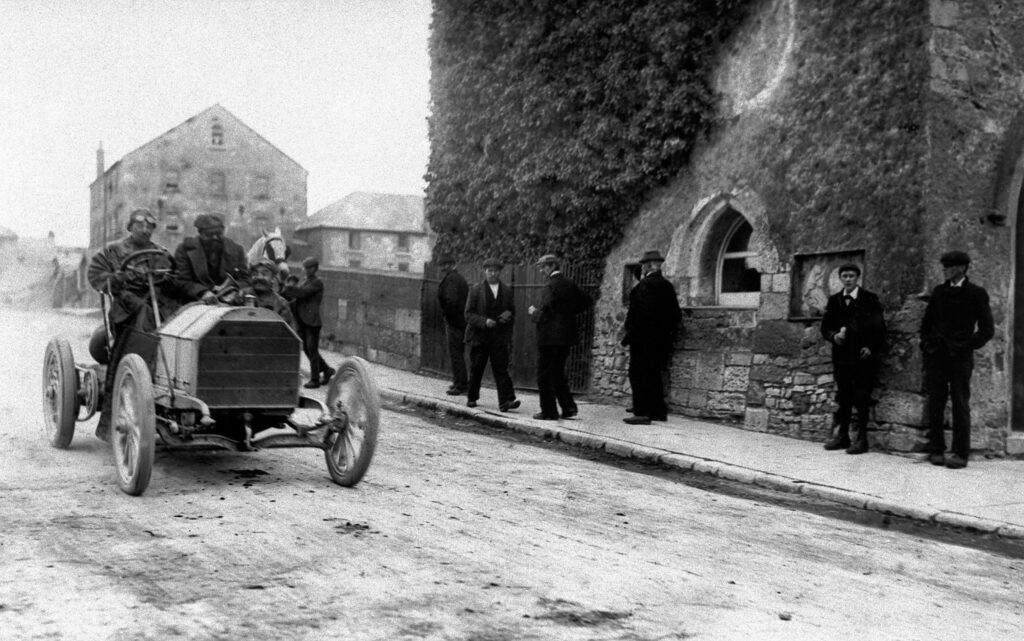
Past the market stalls out front. I step into the old market house, and find the warmest of welcomes in the little gem that is The Shackleton Museum. Athy is rightly proud of her remarkable son, and the small exhibition tells his story – and that of the town – through some great exhibits and with considerable charm.
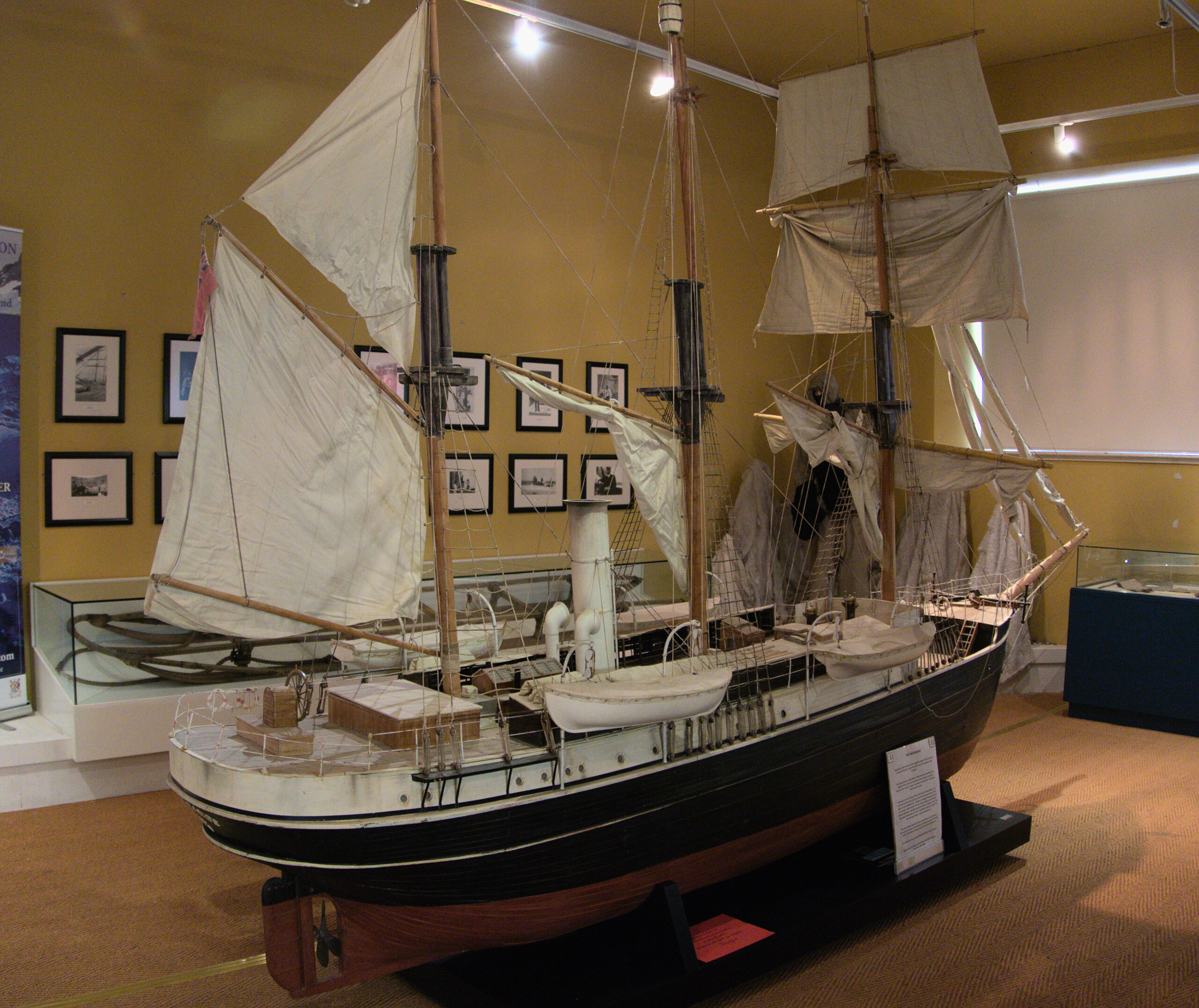
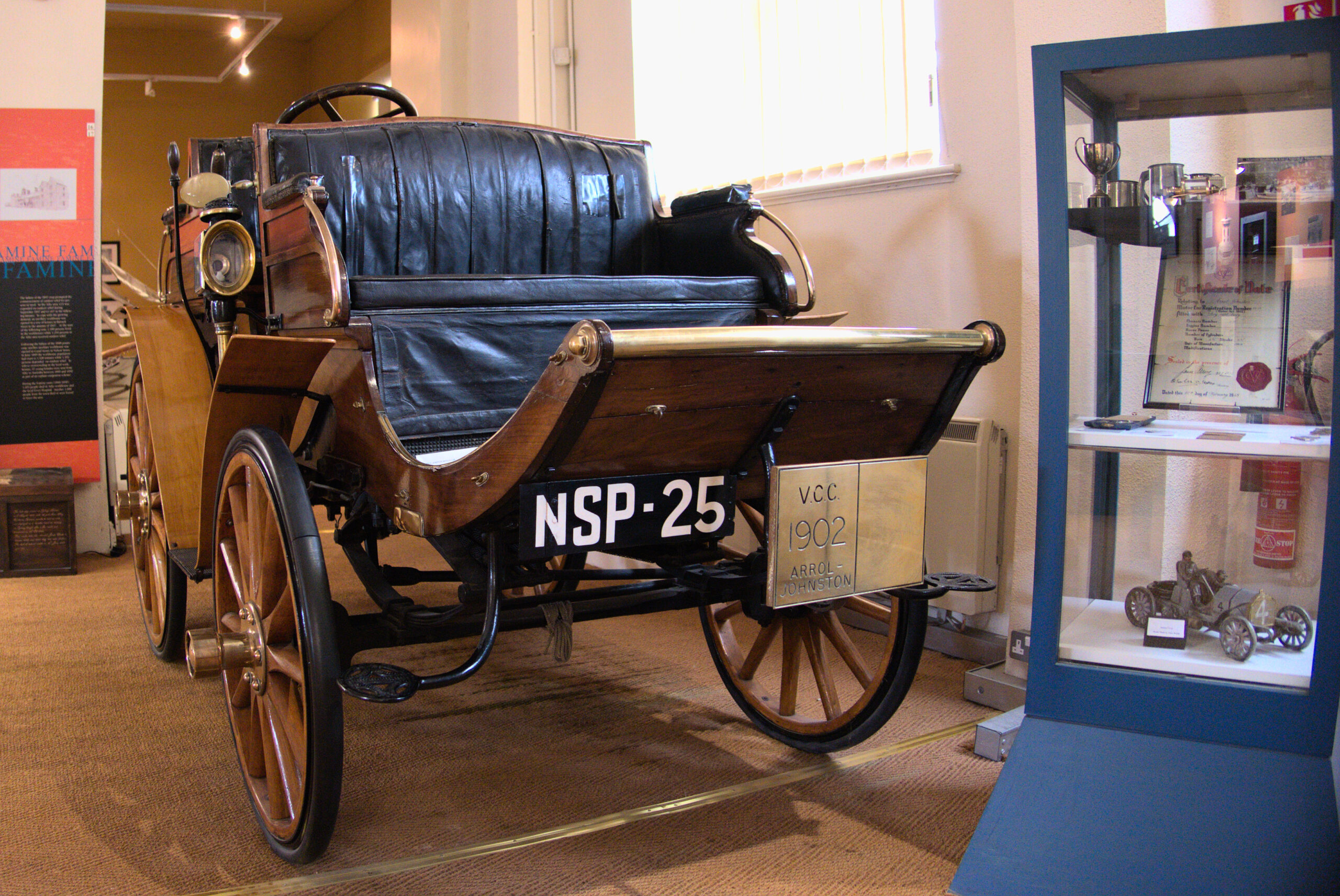
A little side room is set out with folding chairs and a digital projector. I enter alone, press play and take a seat – glad to rest awhile. The story of Shackleton’s life and adventures. Next, a wistful and interesting film about the canal. Then familiar footage as the Gordon Bennett feature starts.
Wait!
It quickly becomes apparent that this is something special. While much of the footage is familiar, the audio content is based on an RTÉ radio documentary from the 1970s. First hand accounts from people who had witnessed the great event.
Then, he said it.
The disembodied elderly gentleman in this faint projection told me that my hunch was correct. The start of the Gordon Bennett was not at Ballyshannon crossroads… it was “a mile” before the crossroads!
I thank the attendant for her time, praise the museum and enthusiastically “exit through the gift shop”.
Right! Ballyshannon!
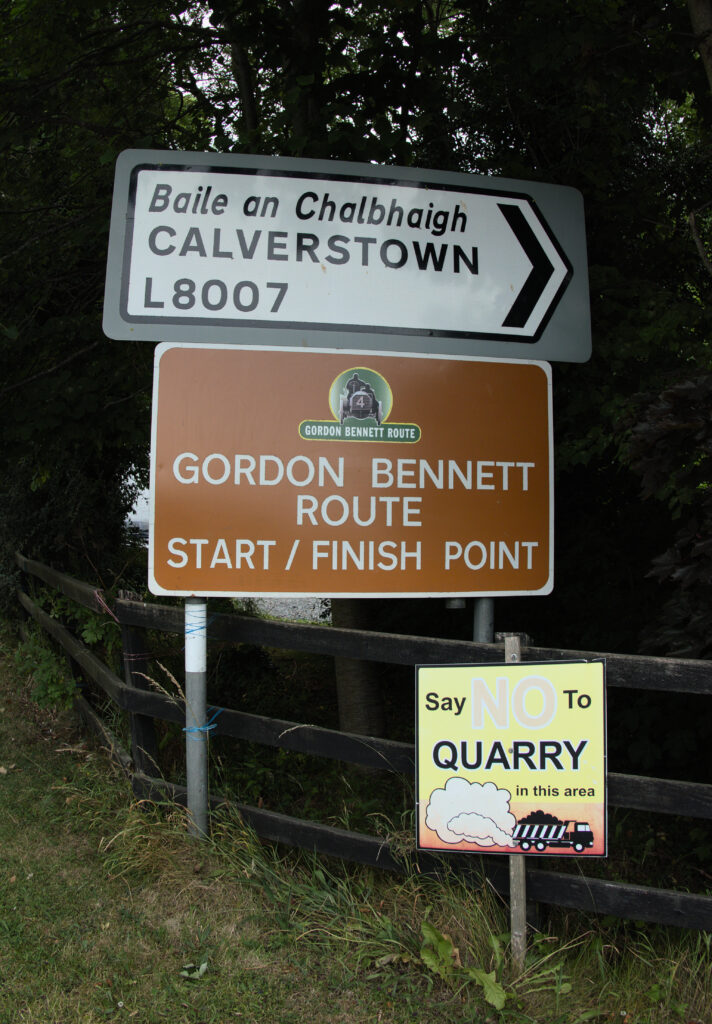
Some of my favourite images of the 1903 Gordon Bennett Cup were taken around Ballyshannon. The cottage, with a Mercédès parked outside. The Napier and Mercédès waiting for their signal to start. The advertising signage, and the balloon that didn’t fly. The remarkable spectator stand, across the road.
At Ballyshannon crossroads there is a modern sign declaring the start of the Gordon Bennett Route. I abandon the car in a pub car park, grab the camera and take a look.
“I hope you mean the tourist route, because the race didn’t start here”, I declare to no-one. To the metal sign, and the birds in the trees. I take a snap, and start to dander down the road. Suddenly aware that this quiet country road is The Place. How many inches below my feet is that rough mixture of Westermite and stone?
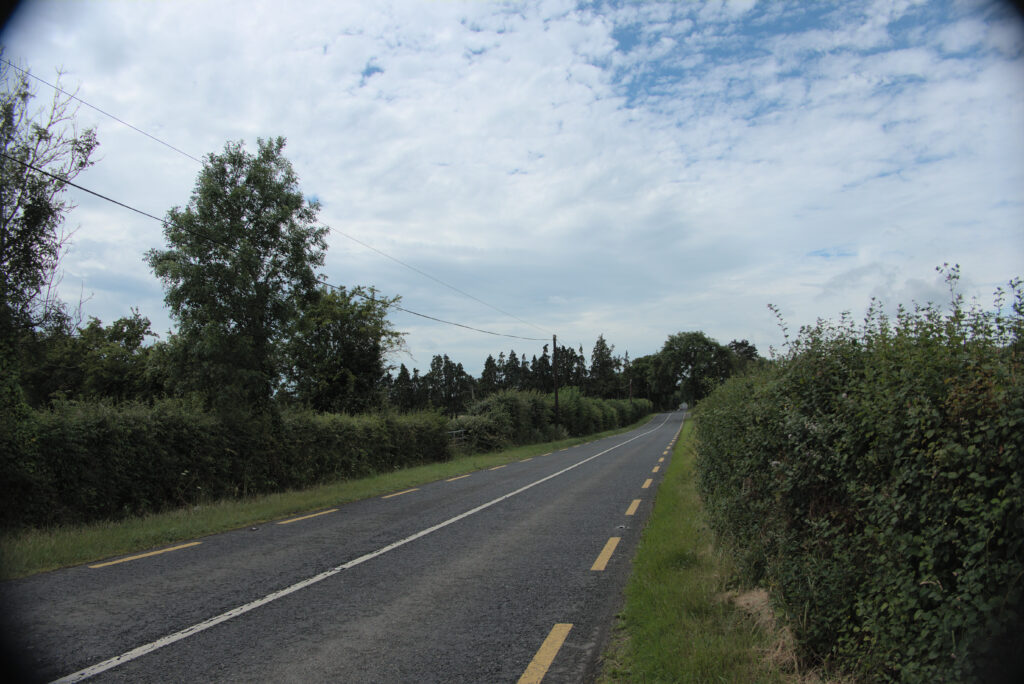
Kicking the grass and looking about. The height of the verge, the entrance to the fields, the rise & fall of the road surface. Aye, this is the place all right. Then, a little less than a mile from the crossroads, is the cottage.
I cross the road to take in the photographer’s view from 1903. Imagine the noise and smell of the cars warming-up just ahead of the start, a few metres up the road. The Dunlop banners fluttering, the brass band playing, the one thousand spectators in the grandstand at the crossroads.
Curious. This little home once had Dunlop painted on its slate roof, for the greatest motor race in the world. Given its time again it may have been as famous as Maison Blanche at La Sarthe.
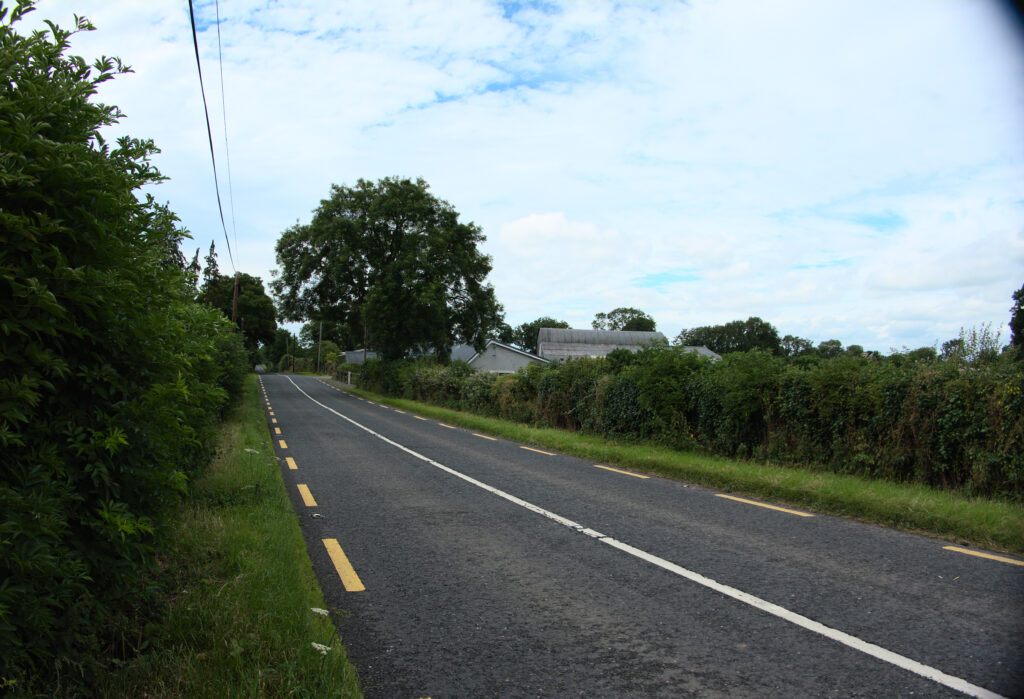

I can’t process anything more.
I’ve travelled the whole circuit over two days, yet only started to scratch at the history. Returning to the car, I flick through the photographs and conclude that I’m done. Coffee, food… and probably time to start heading back to Dublin.
There has been some excellent writing and research on this place, and the 1903 Gordon Bennett Cup. Yet I have a nagging sense that it has more secrets to give-up. That the complete story is yet to be presented in the detail and scale that it deserves.
I have no idea what plans are afoot for the Gordon Bennett 120th anniversary. I would love to think that many heads and archives could come together to create a definitive, immersive resource.
Either way, I’ll be back. For the roads, the country and the welcome.
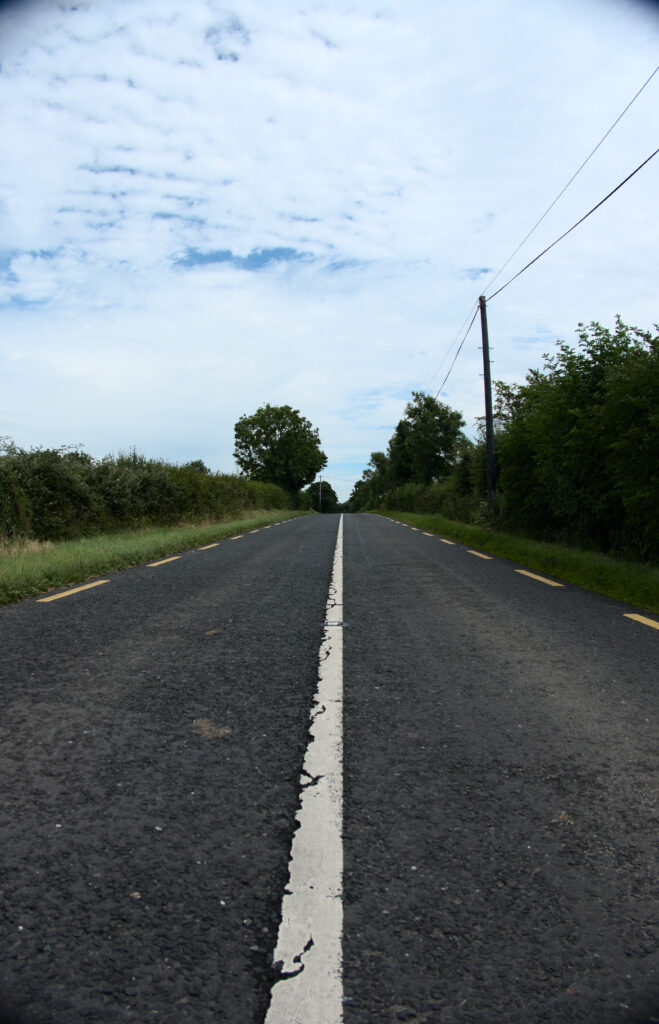
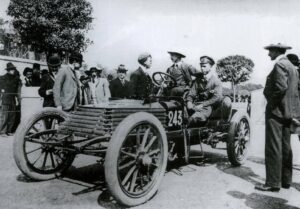
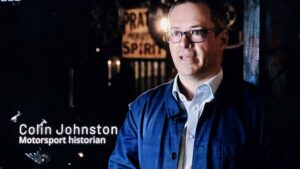
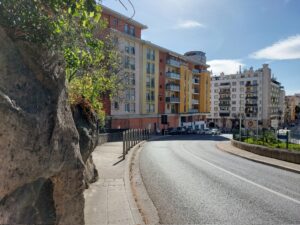
Very nice article. Imagine driving one of those things on those surfaces.
Good article!
Thank you for the history. I went to Monza years ago and your descriptions were the way I felt walking those hallowed grounds.